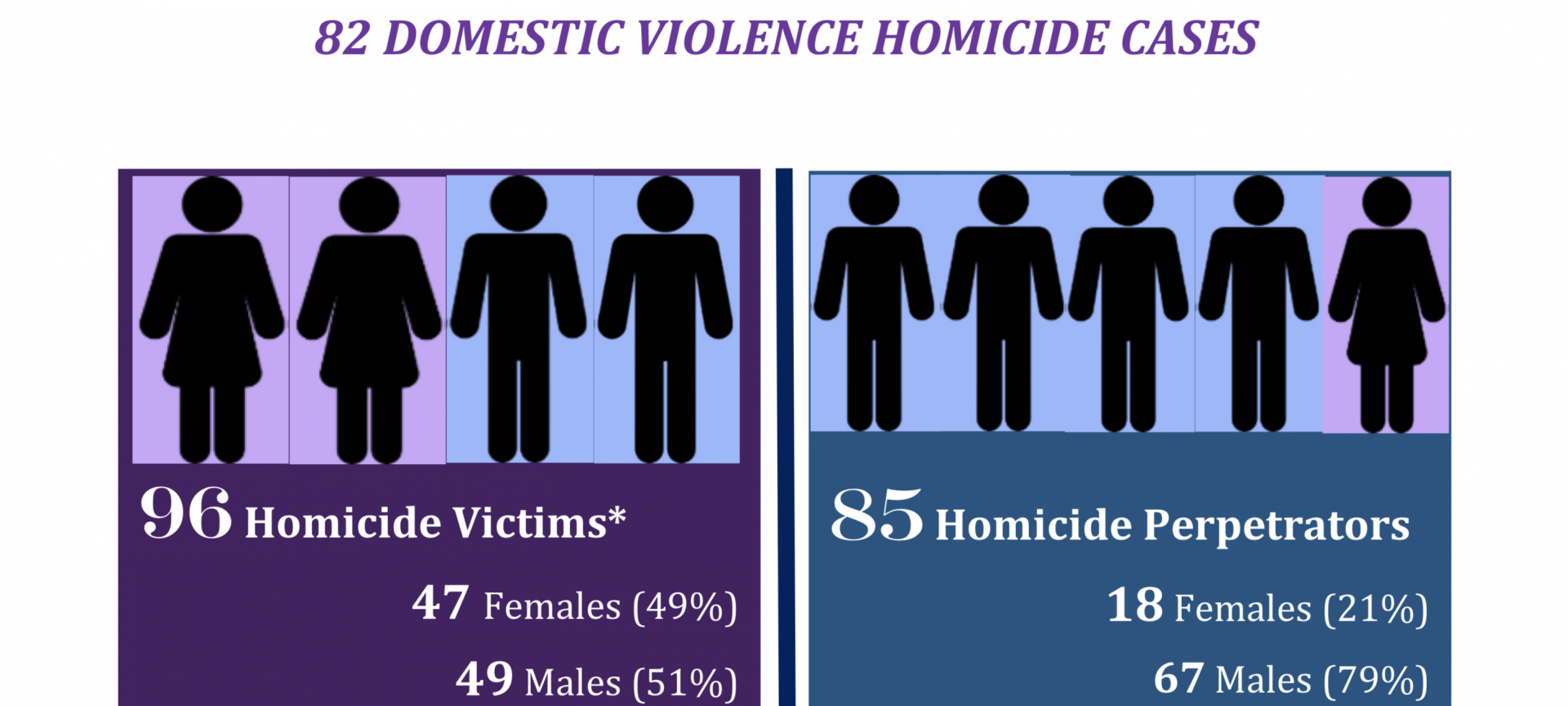
In 2019, 96 people were killed in domestic violence homicides.


In 2019, 96 people were killed in domestic violence homicides.
“Could we have helped?” That’s what Leslie Clingenpeel asked herself when she heard Phillip Ross of Sand Springs killed his girlfriend and their two children in late January. Afterward Ross died by suicide.
“I think we took an internal look and just said, how can we make sure without a doubt that people in our community know that we are here,” Clingenpeel said.
Clingenpeel is director of strategy and advocacy for The Spring, a domestic violence shelter in Sand Springs – a short 10-minute drive west of Tulsa. She says the murders happened in their backyard, but it didn’t end there.
Two days later, a man was arrested for murdering five children and his brother in Muskogee. Then another Sand Springs man was accused of murdering his family days after that. He also died by suicide.
Since January, police have investigated more than a dozen killings in Tulsa, Sand Springs, Muskogee, Chickasha, Bixby and Oklahoma City believed to have been committed by the victims’ intimate partners and family members.
“I certainly don’t want to speak directly to these incidences … But our training and our instinct and our observation would certainly say that things like this are not an isolated incident,” Clingenpeel said. “Typically, as details emerge, we’ll probably see that there were warning signs along the way.”
Some victim advocates believe these deaths are related to an increase in violence they’ve witnessed throughout the COVID-19 pandemic. It’s a worrisome trend confirmed by researchers nationwide.
Victims’ advocates in Oklahoma warned in the early days of the pandemic that violence seemed to be getting worse in part because of the pandemic’s fallout: uncertainty, sickness and economic pain. They said abusers, reeling from a lack of control, would have more opportunity to harm their victims, who would have fewer opportunities to escape.
“I guess in March of 2020, we almost saw an immediate uptick in calls to our organization, to our 24-hour hotline once everyone went on lockdown,” Clingenpeel said.
That’s not all. Domestic violence shelters try to measure how likely an abuser is to kill their victim by gauging their behavior. They do this by asking a set of questions in what is called a lethality assessment.
“We ask ten questions, and we consider high lethality a ‘yes’ answer to at least seven out of our 10 questions,” Clingenpeel explained.
She says throughout the pandemic they came across more victims answering ‘yes’ to more of their questions.
In 2019, there were 96 domestic violence homicide victims in 28 Oklahoma counties.
The state is expected to release a report on homicides for 2020 at the end of this year. Although the total number of deaths hasn’t been reported yet, Sissy Carden is certain violence has been worse.
She remembers reading emails from victims during the shutdowns.
“He was in the house,” Carden said. “She didn’t have a way to talk to me and so she was sending me, they were sending me emails instead and begging for help. And all I could do was tell them to call the police.”
Carden is the assistant executive director of Women in Safe Home, or WISH, in Muskogee. She says at first, because of the lockdowns, their shelter saw fewer people than they did in the previous year.
“When the shutdowns stopped then the calls picked up,” Carden said. “And we did have an influx. I mean, just massive. The shelter filled up.”
Carden says she got about 50 more phone calls from other counties and even other states than was normal.
“So they were just trying to flee anywhere,” she said.
Victims had less opportunity to get away because of COVID-19, and Carden says there were fewer chances for other people to notice something was wrong in their homes. Even as vaccines are made available and restrictions loosen, Carden says it’s important for everyone to be more aware.
“So part of it is just not being a silent bystander,” she said. “ It’s being a vocal bystander saying, ‘I’m going to go ahead and take the risk and call.’”
Leslie Clingenpeel agrees. She says first, Oklahomans need to educate themselves on the signs of abuse and learn which organizations can help. If you suspect someone may be getting abused, she says give them an opportunity to tell their story without judgement.
“Don’t ask the question, ‘What’s wrong with you?’ Ask the question, ‘What’s happened to you,’” Clingenpeel said. “Oftentimes that will open the door for a victim to disclose that something is happening.”
For anyone experiencing violence now, Clingenpeel says take it seriously and remember there are people who can help, and who will believe them.